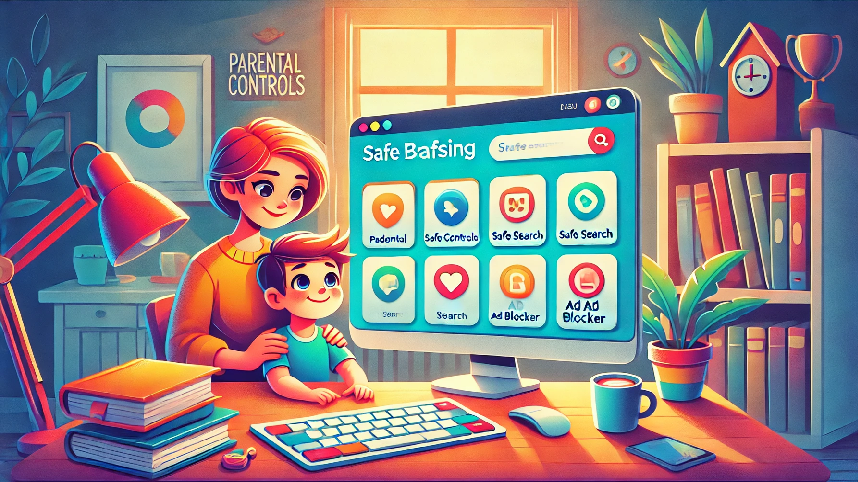How to Set Up Safe Browsing for Kids


The internet is an incredible resource for learning, creativity, and connection—but it’s also a place where kids can encounter risks. As parents and guardians, ensuring safe browsing for children is essential. This guide will walk you through practical steps to create a secure online environment, while keeping things engaging for your little ones.
🛡 1. Use Kid-Friendly Browsers & Search Engines Not all browsers and search engines are designed with children’s safety in mind. Platforms like Kiddle, Safe Search Kids, and KidRex offer kid-appropriate search results, filtering out harmful content.
🔐 2. Enable Parental Controls Most devices and web browsers come with built-in parental controls. Here’s how you can set them up:
Google SafeSearch: Go to Google’s search settings and turn on SafeSearch to filter explicit content.
YouTube Restricted Mode: Enable this under settings to block inappropriate videos.
Apple & Microsoft Family Features: Both offer parental control settings that allow you to block websites, set time limits, and monitor activity.
🛑 3. Block Unsafe Websites A more proactive approach is manually blocking harmful sites. Tools like OpenDNS FamilyShield and Google Family Link allow you to customize which sites your child can access.
⏳ 4. Set Screen Time Limits Balancing screen time is just as important as filtering content. Set daily time limits using:
Built-in screen time tools on iOS and Android
Third-party apps like Qustodio or Net Nanny
📱 5. Educate & Communicate Technology alone isn’t enough to ensure online safety—open conversations matter! Teach your kids:
Never to share personal information online
How to recognize scams and suspicious links
The importance of telling an adult if they see something upsetting
🔄 6. Keep Software & Security Updated Regular updates protect against vulnerabilities. Enable automatic updates for browsers, operating systems, and security software to ensure the latest protections are in place.
👨👩👧 7. Surf the Web Together One of the best ways to ensure safe browsing is by being present. Explore educational websites together, play interactive learning games, and create a habit of co-browsing where you can guide them in real time.
🎯 Final Thoughts Safe browsing isn’t about limiting access—it’s about creating a secure and enriching digital experience. By setting up protective measures, maintaining open communication, and staying involved, you empower your children to navigate the internet wisely.
🌟 Want to go the extra mile? Consider installing a child-friendly browser extension or setting up a dedicated “kid zone” on your home computer with pre-approved websites!
By taking these steps, you’ll build a safe, fun, and educational online environment for your little digital explorers. 🚀
